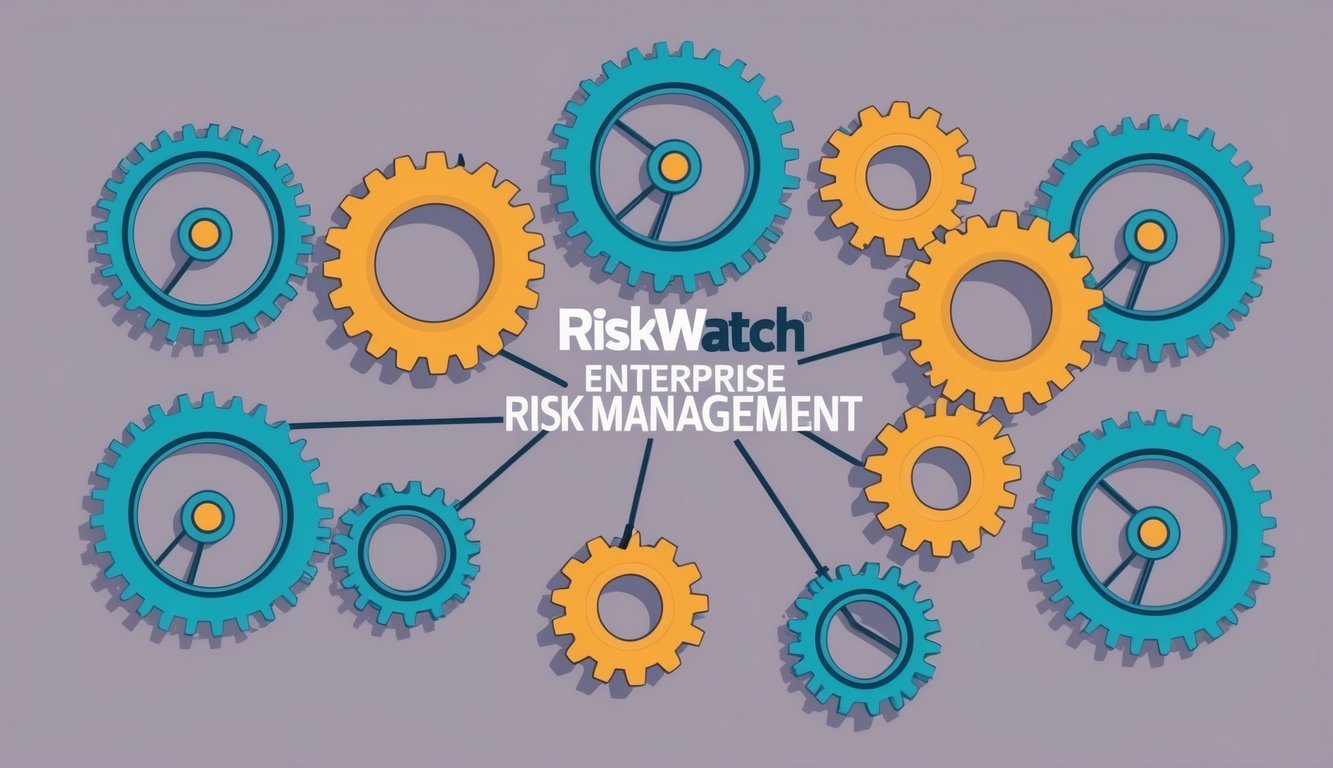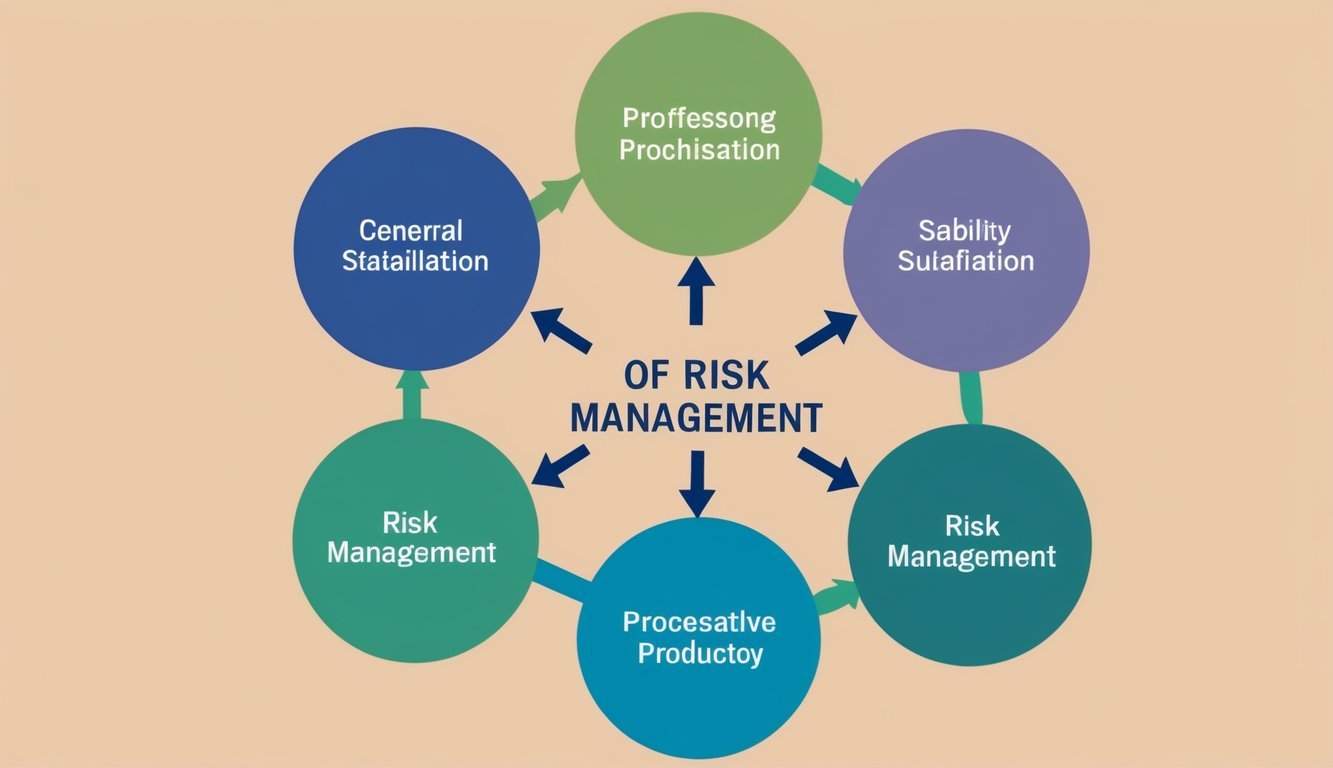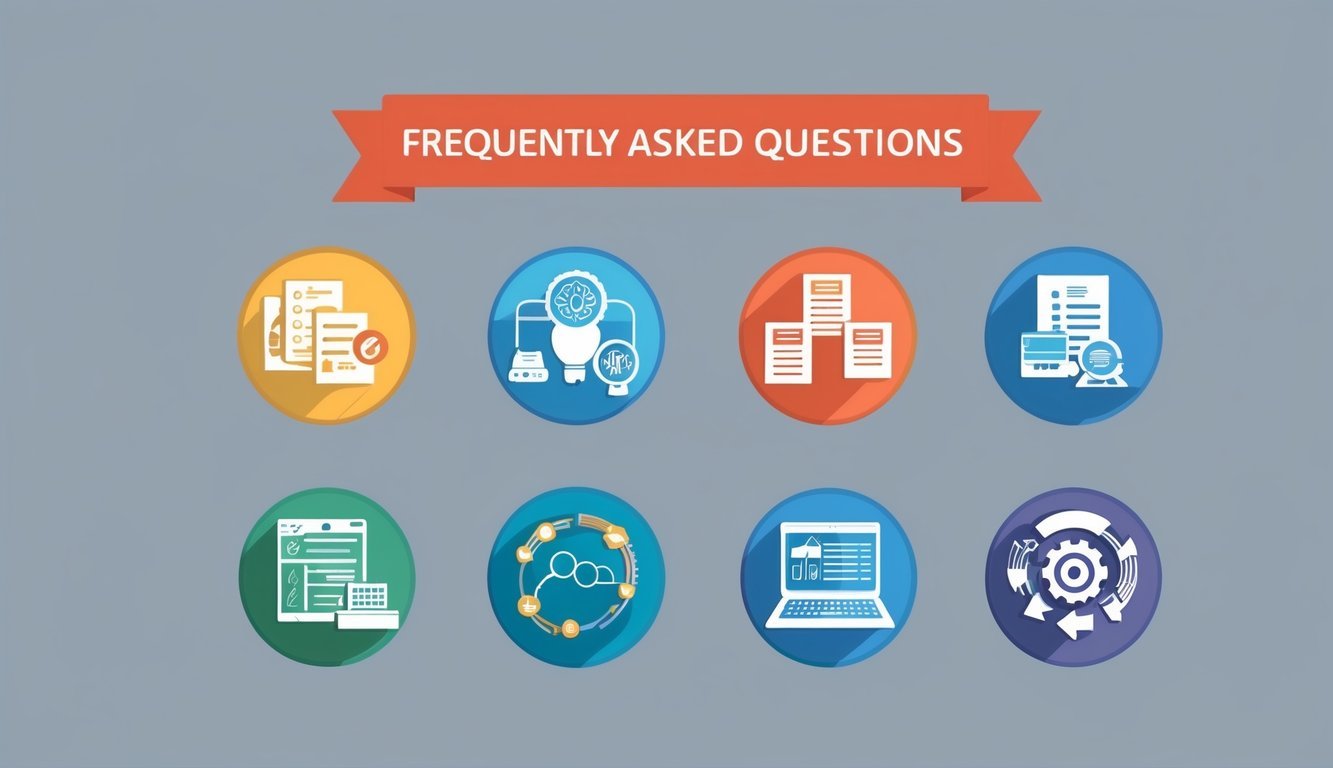Risk management is a key part of running any business.
It helps you spot and deal with problems before they get big.
Good risk management can save you money and keep your company safe.
alt=”A group of six interconnected gears, each labeled with a different aspect of risk management, turning smoothly in unison”>
There are many tools out there to help with risk management. You can find risk management software that fits your needs and budget. These programs make it easier to track risks, plan for issues, and keep your business on track.
Let’s look at some top choices for risk management software in 2024.
1) RiskWatch Enterprise Risk Management

Looking to step up your risk management game? RiskWatch Enterprise Risk Management might be just what you need.
This software makes handling risks a breeze for businesses of all sizes.
RiskWatch streamlines risk assessments and gives you clear steps to fix problems.
No more scratching your head over what to do next!
Want to save time and money? RiskWatch has got your back.
Users report cutting down on risk management time and costs by a whopping 80%.
That’s more time for you to focus on growing your business.
Worried about keeping up with regulations? Don’t sweat it.
RiskWatch stays on top of changes, so you’re always meeting the latest standards.
It’s like having a compliance expert on your team 24/7.
Big companies trust RiskWatch, including many Fortune 100 firms.
If it’s good enough for the big players, you know it’s got some serious muscle behind it.
From security to compliance, RiskWatch covers all your bases.
It’s a one-stop shop for keeping your business safe and sound.
2) LogicManager Risk Management Software
LogicManager offers enterprise risk management software that can help you get a handle on risks across your organization.
Their system lets you spot potential problems before they blow up.
You can use LogicManager to break down walls between departments.
This makes it easier for everyone to work together on tackling risks.
The software also gives you a bird’s eye view of what’s going on.
With LogicManager, you get tools powered by AI to analyze risks.
These can help you uncover hidden dangers that might be lurking in specific parts of your company.
You’ll be able to flag these issues for higher-ups while there’s still time to act.
The platform is designed to grow with your needs.
You can customize it to fit your company’s specific situation.
LogicManager also provides handy to-do lists to keep you on track with your risk management tasks.
3) Resolver Risk Management Software
Resolver’s Risk Management Software helps you handle risks across your business.
It’s a complete set of tools that make risk management easier.
You can spot potential problems using surveys and data collection.
The software does this automatically, saving you time and effort.
With Resolver, you can see how different risks affect your whole company.
This helps you make smarter choices about what to do next.
The software also helps with following rules and staying compliant.
You can keep track of all your tasks and processes in one place.
Resolver has won awards for its tools.
Many businesses like using it because it covers all their risk management needs.
You can use Resolver to look at risks in different areas.
This includes money matters, daily operations, cybersecurity, and more.
The software gives you clear visuals of your compliance work.
You can easily see what needs to be done and track your progress.
4) MetricStream Risk Management
MetricStream offers a top-notch risk management program that’s worth checking out.
It gives you a full view of your risks by connecting them to other important parts of your business.
You can use it to do thorough risk assessments, looking at risks from different angles.
This helps you understand what you’re dealing with better.
The tool is great for seeing how everything fits together.
It lets you link risks to things like company assets, control measures, and rules you need to follow.
One cool feature is that it helps you look at risks in context.
Instead of just fixing a problem, you can see how it fits into your bigger picture.
MetricStream is user-friendly and makes your job easier.
You can use it for planning, keeping an eye on risks, and spotting new ones before they cause trouble.
5) SAP Risk Management

SAP Risk Management is a top-notch program for keeping your business safe from risks.
It’s part of SAP’s bigger suite of financial tools and helps you stay on top of potential problems.
With this software, you can spot risks early and figure out how they might affect your company.
It’s great for businesses of all sizes that want to be proactive about risk.
The program lets you assess potential risk impact on your business value and reputation.
You’ll get a clear picture of what could go wrong and how bad it might be.
SAP Risk Management is flexible.
You can use it on-premise or in the cloud, whatever works best for you.
This means you can access your risk data from anywhere, anytime.
One cool feature is the ability to track how effective your risk management efforts are.
You get reports and analytics to show you what’s working and what’s not.
The software also helps with legal stuff.
It makes sure you’re following all the rules and best practices for risk management.
This can save you a lot of headaches down the road.
6) IBM OpenPages with Watson

Hey, want to tackle risk management like a pro? Check out IBM OpenPages with Watson.
It’s a smart, AI-powered tool that helps you handle all your governance, risk, and compliance stuff in one place.
You can use OpenPages to spot risks, keep an eye on them, and make sure you’re following all the rules.
It’s like having a super-smart assistant who never sleeps!
The cool thing about OpenPages is that it brings together all your risk info from different parts of your business.
No more hunting around for data – it’s all right there.
Plus, it’s got Watson’s brains built in.
That means you get some serious AI power to help you make smart choices about risk.
Want to focus on a specific area? OpenPages has you covered.
There’s even an Operational Risk Management module that helps you handle day-to-day risks.
You can run OpenPages on any cloud, so it’s super flexible.
It works with IBM Cloud Pak for Data, giving you even more tools to play with.
Understanding Risk Management

Risk management helps businesses handle threats and seize opportunities.
It’s a key skill for protecting your company and boosting success.
What Is Risk Management?
Risk management is all about spotting and dealing with potential problems before they hit your business.
It’s like having a shield that guards against nasty surprises.
You start by finding possible risks.
These could be money troubles, tech issues, or even natural disasters.
Then you figure out how bad each risk might be.
Next, you make plans to tackle these risks.
This might mean avoiding them completely, or finding ways to lessen their impact.
Sometimes, you might even decide to accept a risk if the reward is worth it.
Good risk management isn’t a one-time thing.
It’s an ongoing process that needs regular check-ups and updates.
Key Benefits of Risk Management Programs
Risk management programs can really boost your business.
Here’s how:
Safer decision making: You’ll have a clearer picture of what could go wrong, helping you make smarter choices.
Money savings: By spotting problems early, you can avoid costly surprises down the road.
Better planning: Risk management helps you prepare for different scenarios, making your business more flexible.
Stronger reputation: When you handle risks well, customers and partners trust you more.
Legal protection: Good risk management can help you stay on the right side of laws and regulations.
Training in risk management can really level up these benefits.
It gives you and your team the know-how to handle risks like pros.
Choosing the Right Program

Picking the best risk management program depends on your company’s needs and goals.
You’ll want to think about a few key things and make sure the program fits your specific situation.
You should assess factors like cost, scalability, and ease of integration with existing systems to ensure a seamless implementation.
Additionally, comparing different options, including the best affordable healthcare management programs, can help you find a solution that balances risk reduction with financial efficiency.
Ultimately, selecting the right program will enhance your company’s resilience and long-term success.
Factors to Consider
When looking at risk management software, think about your budget and team size.
Smaller companies might do fine with simpler tools, while big corporations need more complex systems.
Check if the program can handle the types of risks you face.
Some are better for financial risks, others for safety issues.
Look at how easy it is to use.
You want something your team can learn quickly.
Make sure it works with your other software.
Good programs should connect with what you already use.
Think about reports too.
Can it make the charts and data you need for meetings?
Customizing Risk Management Strategies
Your risk plan should fit your company like a glove.
Start by listing your biggest risks.
Then, pick a program that lets you focus on these areas.
Many tools let you set up custom risk categories and scoring.
Think about who needs to see what info.
Good software lets you control who sees which risks.
Set up alerts for your most important issues.
This helps you catch problems fast.
Use the program to track how well your risk plans work.
Adjust as you go to make things better.
Remember, the best tool is one you’ll actually use.
Pick something that fits how your team works.
Frequently Asked Questions

Risk management programs offer many options for students and professionals.
Top schools, online courses, and industry certifications can help you build skills in this growing field.
Which universities offer the top programs in risk management?
The University of Georgia has a strong risk management program.
Other top schools include Temple University and St. John’s University.
These programs blend coursework in finance, insurance, and business strategy.
What are the top graduate programs for risk management?
Columbia University offers a Master of Science in Enterprise Risk Management.
This program covers all aspects of ERM.
Other top grad programs can be found at NYU and Georgia State University.
Which degrees are considered the best for breaking into the insurance industry?
A bachelor’s in risk management is a great start for an insurance career.
You could become an underwriter or actuary.
Finance and business degrees also work well for insurance jobs.
How can I study risk management and insurance online?
Many schools now offer online risk management degrees.
You can earn a bachelor’s or master’s degree fully online.
For example, Florida State University has flexible online programs for working adults.
Are there well-known risk management certifications or standards recommended for professionals?
Yes, there are several respected certifications.
The Certified Risk Manager (CRM) is popular, and so is the Associate in Risk Management (ARM).
These certifications show employers you have key risk management skills.
How do programs at institutions like University of Georgia stand out in risk management education?
UGA’s program focuses on real-world experience.
You’ll work on actual risk management projects.
The school also has strong ties to insurance companies.
This helps with internships and jobs after graduation.

